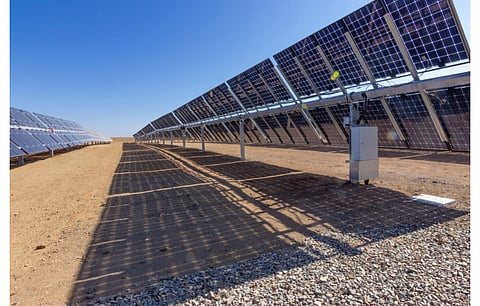

There is good and bad news for the US solar industry, depending on which side you are on—domestic manufacturers or project developers. The US government has confirmed it is extending the Section 201 tariffs imposed on imported solar cells and modules by another 4 years, but exempted bifacial panels from its ambit.
In a statement issued by The White House, the US President determined that the safeguard is necessary to prevent or remedy the serious injury to the domestic industry and that 'there is evidence that the domestic industry is making a positive adjustment to import competition' with the tariffs in place.
The administration has also increased the tariff-rate quota (TRQ) on imports of crystalline silicon solar (CSPV) cells to 5 GW on annual basis.
Industry reactions
While not fully happy with the decision, the Solar Energy Industries Association (SEIA) called it a 'balanced solution' that upholds bifacial solar panel exclusion and increases tariff rate quota for cells. The latter will benefit both domestic module makers and their customers in residential and commercial & industrial (C&I) segments, it added.
Bifacial panel exemption is also a good move to support the solar industry till the country's domestic manufacturing capacity picks up since, as SEIA pointed out, this technology's production in the USS is not yet 'at scale'. "Today's decision recognizes the importance of this innovative technology in helping to improve power output and lower costs in the utility-scale segment," stated SEIA.
For the background, these tariffs were initially imposed by Biden's predecessor Donald Trump in 2018, allowing for gradual reduction in the tariffs on annual basis for 4 years. The US International Trade Commission (USITC) had recommended the government to continue with the tariffs. Had Biden not signed on this proclamation, the tariffs would have expired on February 6, 2022 (see USITC Wants Section 201 Tariffs To Continue).
SEIA President and CEO Abigail Ross Hopper said next step is for the industry to press for long-term federal investments in domestic manufacturing, in particular the Solar Energy Manufacturing for America Act (see US Senator Wants Tax Credit For Local Manufacturers).
Echoing similar sentiments, President and CEO of the American Council on Renewable Energy (ACORE) Gregory Wetstone called the decisions as 'reasonable steps' for the industry to continue growing, but stressed that the focus now should be on growing a robust domestic supply chain.
American Clean Power Association CEO Heather Zichal too lauded the move stating, the "President's decision to extend the tariffs, applicable to monofacial solar cells and modules, gives the domestic solar manufacturing industry four more years to adjust to import competition as intended by the statute."
Tariffs have not helped domestic production
Back in December 2021, analysts at Rystad Energy said while the tariffs have 'decimated' direct shipments from China, they have been unsuccessful in decreasing overall US dependency on imports. If in 2020, the US imported 26.7 GW worth of solar panels, in 2021 the number increased to 27.8 GW, from various countries. In comparison, Chinese panels claimed 57% market share in 2011 but in 2021 the analysts estimated it to have dropped to below 1%.
Malaysia was the top supplier in 2020 to the US claiming 42% market share, followed by Vietnam with 38%, and their share in 2021, as per Rystad, was 31% and 28.8%, respectively. In 2021, Thailand accounted for 26.2% share. "The decrease in market share for Malaysia and Vietnam illustrates a rise in imports from other nations, including Thailand and South Korea. Only 1% of 2021 year-to-date imports come from regions outside of Asia," as per the analysts.
At the same time, the tariffs have not exactly helped the domestic manufacturing to boom either. "In 2021, US-manufactured solar PV modules are projected to total 5.2 GW, compared with the 27.8 GW expected from imports. Of this 5.2 GW, around half will come from thin-film panel manufacturing, primarily by First Solar, the world leader in thin-film production," explained Rystad Energy. "The other half is the more widely used imported composite silicon (c-Si) panels, although the projected 2.5 GW represents a mere 50% of total US manufacturing capacity."
.png?w=50&fm=png)